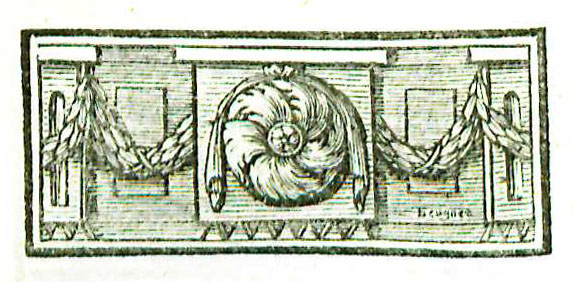Hippokratous Aphorismoi = Hippocratis Aphorismi: Hippocratis et Celsi Locis Parallelis Illustrati
by Hippocrates
| Hippocratis Aphorismi | |
|
Title page from Hippocratis Aphorismi, George Wythe Collection, Wolf Law Library, College of William & Mary. | |
| Author | Hippocrates |
| Translator | Lucas Verhoofd |
| Published | Parisiis: Apud Theophilium Barrois Juniorem |
| Date | 1784 |
| Language | Greek and Latin on opposite pages |
| Pages | xx, 353 |
| Desc. | 12mo (13 cm.) |
| Location | Shelf N-4 |
Within the Corpus Hippocraticum, the Aphorismi, is "a collection of 412 short counsels regarding diagnosis, prognosis, and treatment."[6] The term "aphorism" was first used in connection with the work of Hippocrates.[7]
Evidence for Inclusion in Wythe's Library
Listed on the Jefferson Inventory as "Hippocratis Aphorismata. p.f." and given by Thomas Jefferson to his son-in-law Thomas Mann Randolph. Later appears on Randolph's 1832 estate inventory as "'Aphorisms of Hypocrates' ($3.75 value)." We cannot determine the precise edition Wythe owned from the information available. Brown's Bibliography[8] lists a 1736 octavo edition published in Edinburgh. George Wythe's Library[9] on LibraryThing includes no specific edition and indicates "Probably a portion of the work only. Precise edition unknown." The 12-centimeter, 1784 edition chosen by the Wolf Law Library is a good potential candidate as it corresponds to Jefferson's indicated size of "p.f." (petit folio).
Description of the Wolf Law Library's copy
Bound in red morocco, covers with three gilt rules around the sides, edges and turn-ins gilt. Spine has triple rules dividing the panels which are decorated in gilt and a black gilt label.
Images of the library's copy of this book are available on Flickr. View the record for this book in William & Mary's online catalog.
See also
References
- ↑ The New Encyclopaedia Britannica, s.v. "Hippocrates," (Chicago: Encyclopaedia Brtannica, Inc, 2007), 5:939.
- ↑ Internet Encyclopedia of Philosophy, s.v. "Hippocrates," accessed October 30, 2013.
- ↑ The New Encyclopaedia Britannica, s.v. "Hippocrates."
- ↑ Britannica Concise Encyclopedia, s.v. "Hippocrates," accessed November 11, 2013.
- ↑ Internet Encyclopedia of Philosophy, "Hippocrates".
- ↑ The New Encyclopaedia Britannica, s.v. "Hippocrates."
- ↑ The New Encyclopaedia Britannica, s.v. "Aphorism," (Chicago: Encyclopaedia Brtannica, Inc, 2007), 1:481.
- ↑ Bennie Brown, "The Library of George Wythe of Williamsburg and Richmond," (unpublished manuscript, May, 2012) Microsoft Word file. Earlier edition available at: https://digitalarchive.wm.edu/handle/10288/13433
- ↑ LibraryThing, s.v. "Member: George Wythe", accessed on November 11, 2013.
External Links
Read this book in Google Books.


